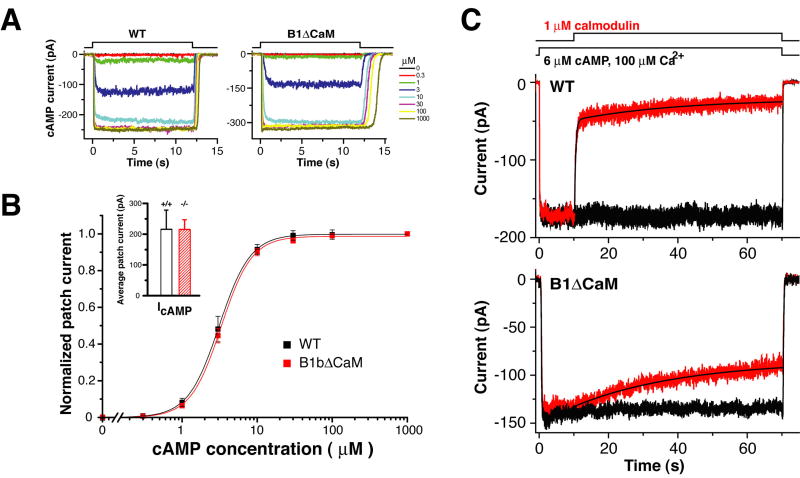Figure 2. The CNG channel in CNGB1ΔCaM OSNs has normal sensitivity to cAMP, but lacks fast desensitization by Ca2+/CaM.
(A) cAMP-induced currents of an inside-out excised membrane patch from the dendritic knob of a wild type OSN (left) and a CNGB1ΔCaM OSN (right). Patches were perfused with increasing concentrations of cAMP.
(B) cAMP dose-response relations of the wild type and CNGB1ΔCaM channels. Current values were obtained by averaging from a time point when a steady state was reached (typically 0.5 - 1 second) to the end of cAMP exposure (12 seconds). Solid lines represent Hill curves fitted to the data. The wild type and CNGB1ΔCaM channels have virtually identical cAMP dose-response relations. Wild type channel K1/2, 3.11±0.02 μM (mean±SEM, n=7); CNGB1ΔCaM channel K1/2, 3.30±0.07 μM (n=7). Inset, the averaged steady-state currents induced by a saturating concentration of cAMP (100 μM). Wild type, 216±62 pA (mean±SEM, n=8); CNGB1ΔCaM, 215±41 pA (n=20).
(C) Patches excised from wild type (upper panel) and CNGB1ΔCaM (lower panel) OSNs were exposed to 6 μM of cAMP (the concentration corresponding to 0.75 open probability). The black trace represents the current evoked by cAMP in the absence of CaM. Application of CaM (red traces) quickly reduced the CNG current in patches from wild type OSNs, while causing only a slow reduction in patches from CNGB1ΔCaM OSNs. The decay in wild type patches could be fitted with paired exponentials with average time constants of 0.78±0.42 seconds for the fast phase and 37±15 seconds (mean±SEM, n=4) for the slow phase. In CNGB1ΔCaM patches, only a single exponential was fitted with an average time constant of 97±60 seconds (n=4). All experiments were performed in symmetrical Na-methanesulfonate solution (see Methods), and the pipette solution contained 1 mM niflumic acid to suppress the Ca2+-activated Cl- current.

